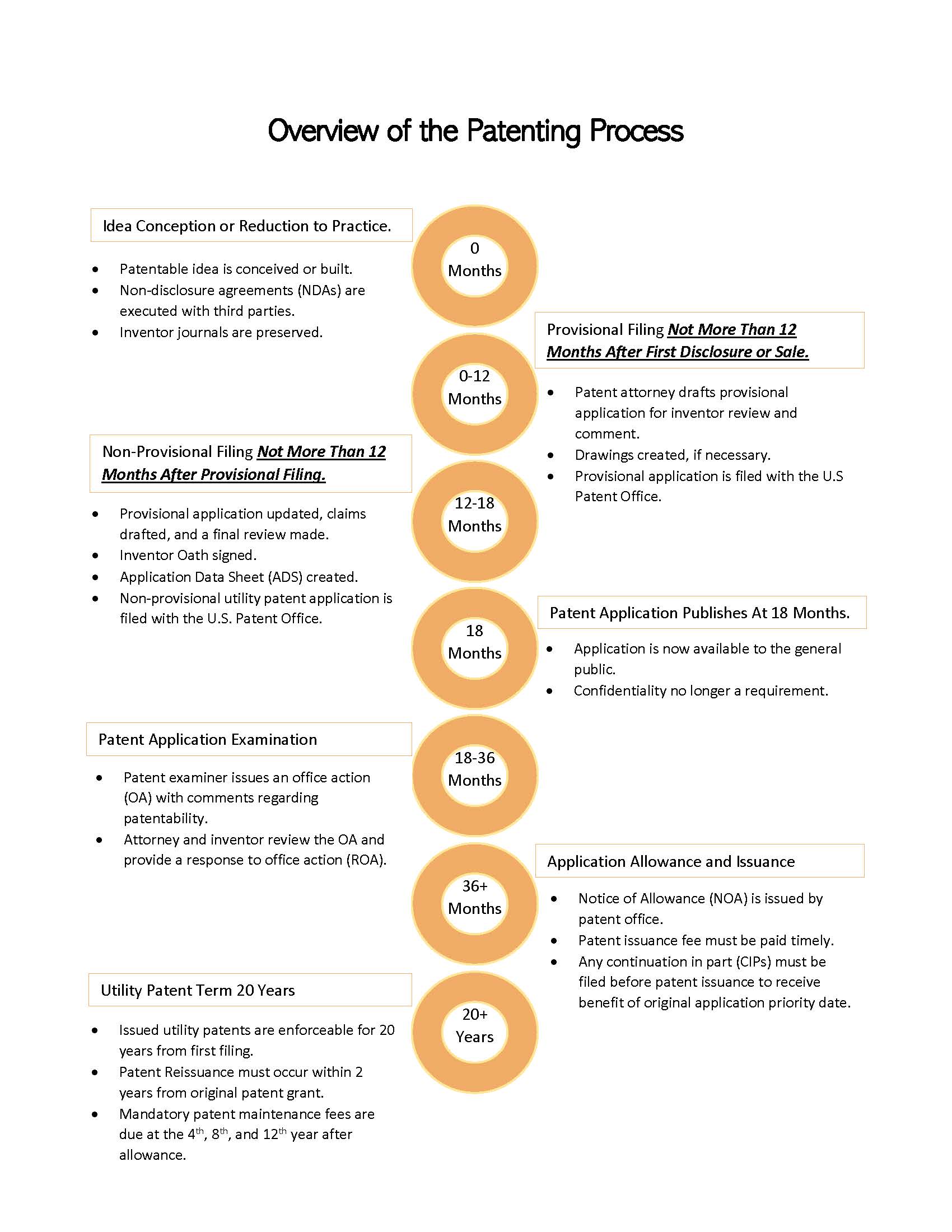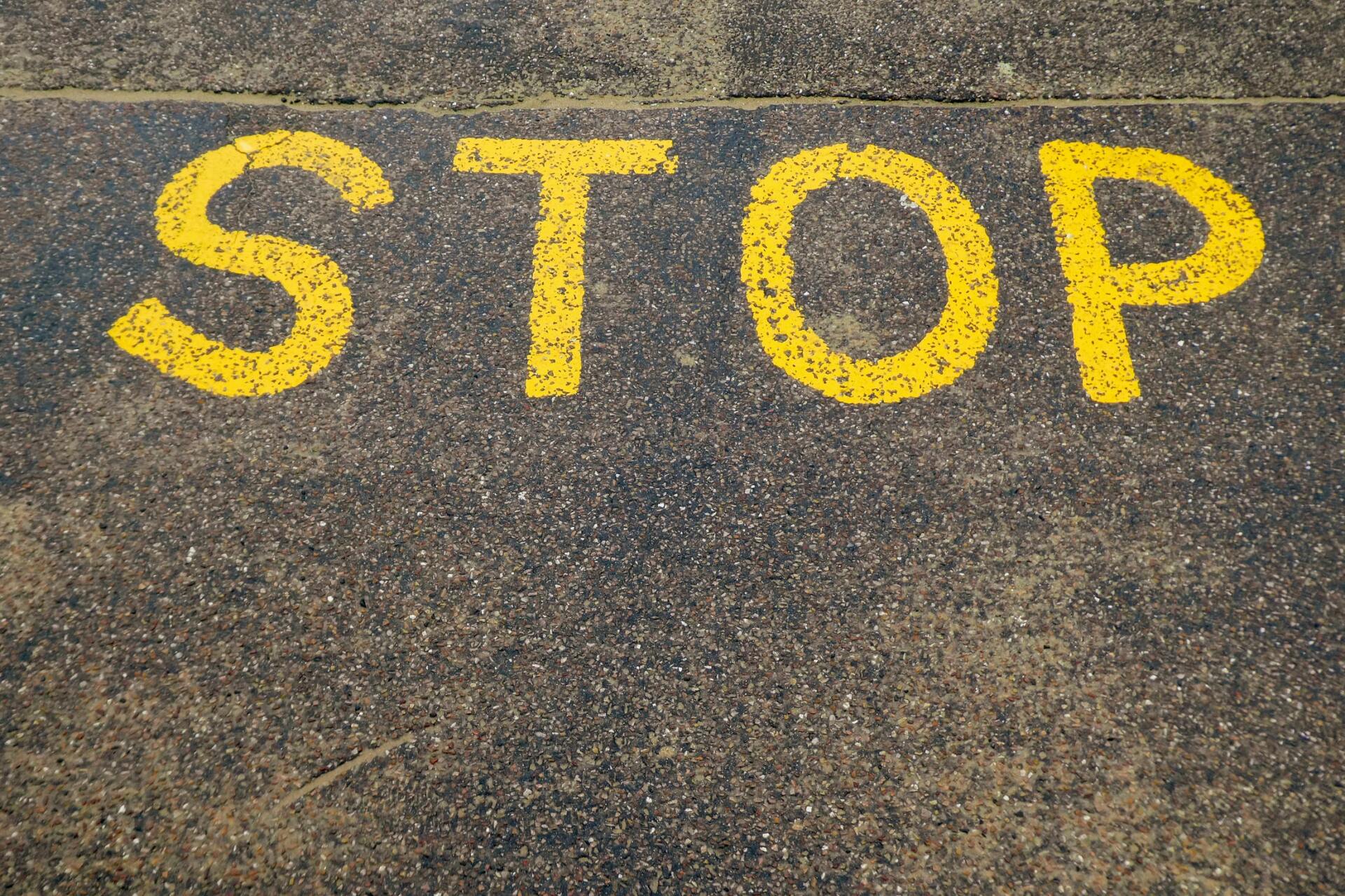OVERVIEW OF THE PATENTING PROCESS
The patenting process starts with an idea that becomes an invention, and that invention goes through a patent analysis, a patent search, and is reduced to a patent application.
OVERVIEW OF THE UTILITY PATENTING PROCESS
Dallas Patent Attorneys
Our Dallas patent lawyers assist clients in preparing, searching, and filing U.S. patents. Our lawyers are licensed with the United States Patent & Trademark Office and work in the specialty field of law governing intellectual property. For more information on the preparing utility patents, see our
Patent Registration page.
Patent Resources & Services
- Patent Overview
- Patent Prosecution
- Provisional Patent Application
- Patent Licensing
- Patent Infringement Defense
- Patent Search & Due Diligence
- Inter Partes Review (IPR)
- Post Grant Review (PGR)
- Covered Business Method Review (CBM)
- Patent Reexaminations
- Patent Portfolio Management
- PCT International Patent Filings
Need any help?
Industry Resources & Services
- Alcohol & Beverage Law
- Blockchain Law
- Cosmetics Product Law
- Crypto-currency Law
- Cyber-security Law
- Digital Marketing
- eCommerce Law
- Energy Law
- Fashion Industry Law
- Health Technology Law
- Oil & Gas Law
- Product Industry Overview
- Professional Services law
- Real Estate Development Law
- Restaurant Services Law
- Retail Business Law
- Software Industry Law
- Sporting Goods Law
- Technology Law
- Video Gaming Industry Law
-
Patent Overview
Button -
Patent Prosecution
Button -
Provisional Patent
Button -
Patent Licensing
Button -
Patent Infringement Defense
Button -
Patent Search & Due Diligence
Button -
Inter Partes Review (IPR)
Button -
Post Grant Review (PGR)
Button -
Covered Business Method
Button -
Patent Reexam
Button -
Patent Portfolio Management
Button -
Patent Cooperation Treaty (PCT)
Button
Additional Overview of the Patenting ProcessFocus
The utility patenting process involves several key stages, from conception to patent grant. Here's an overview:
- Conception: The process begins with the conception of a new and useful invention. This is the moment when an inventor conceives of an idea that may be eligible for patent protection.
- Patentability Assessment: Before proceeding with a patent application, it's crucial to conduct a thorough patentability search and assessment. This helps determine if the invention meets the criteria for patentability, including novelty, non-obviousness, and utility.
- Patent Application Drafting: Once the invention is deemed patentable, the inventor or their legal representative drafts a patent application. The application includes a detailed description of the invention, along with claims that define the scope of protection sought.
- Filing the Application: The patent application is filed with the relevant patent office, such as the United States Patent and Trademark Office (USPTO). Upon filing, the application receives a filing date, establishing priority for the invention.
- Patent Examination: The patent application undergoes examination by a patent examiner at the patent office. The examiner reviews the application to ensure compliance with patent laws and determines whether the invention meets the criteria for patentability.
- Office Actions and Responses: During examination, the patent examiner may issue office actions raising objections or rejections to the application. The applicant's attorney can respond to these office actions by addressing the examiner's concerns and providing arguments and amendments to overcome any objections.
- Patent Grant: If the patent examiner determines that the invention meets the criteria for patentability and all formal requirements are satisfied, the patent office grants a patent. The patent is issued, and the inventor becomes the owner of the patent rights, granting them exclusive rights to the invention for a limited period.
- Maintenance and Enforcement: Once granted, the patent owner must maintain the patent by paying maintenance fees at specified intervals during the patent term. The patent owner also has the right to enforce their patent against infringers through legal action.
CLIENT MATTERS
5,000+
YEARS OF SERVICE
25+
Award Winning
Recognized in the legal industry as dedicated board-certified lawyers and Rising Stars.
Expert Team
Your project will be handled by legal experts every time. You will have the most experienced attorneys working for you.
Quality Representation
Wilson Legal Group P.C.
d/b/a Wilson Whitaker Rynell
(972) 248-8080 (Dallas) MAIN OFFICE
(713) 830-2207 (Houston) Appointment Only
(512) 691-4100 (Austin) Appointment Only
For more information on how we can assist in your intellectual property, commercial litigation, or other personal needs, let us know how we can help you:
Contact Us - Main Page
We will get back to you as soon as possible.
Please try again later.
Disclaimer:
This form does not establish an attorney-client relationship, and should only be used to contact the firm about scheduling a call or meeting. No confidential or sensitive information should be sent using this form.
The law office of Wilson Legal Group P.C. (d/b/a Wilson Whitaker Rynell) represents clients nationwide, including Dallas, Austin, Houston, and other Texas areas such as Fort Worth, Arlington, Carrollton, Plano, Allen, Lewisville, Flower Mound, Irving, Denton, McKinney, North Richland Hills, and all cities within Dallas County, Tarrant County, Collin County, and Denton County.
SERVICES
OFFICES
ABOUT
CONTACT
BLOG
JOIN OUR NEWSLETTER
Wilson Whitaker Rynell
16610 Dallas Parkway, Suite 1000
Dallas, Texas 75248
972-248-8080 (MAIN)
972-248-8088 (FAX)
info@wrrlegal.com (E-MAIL)














